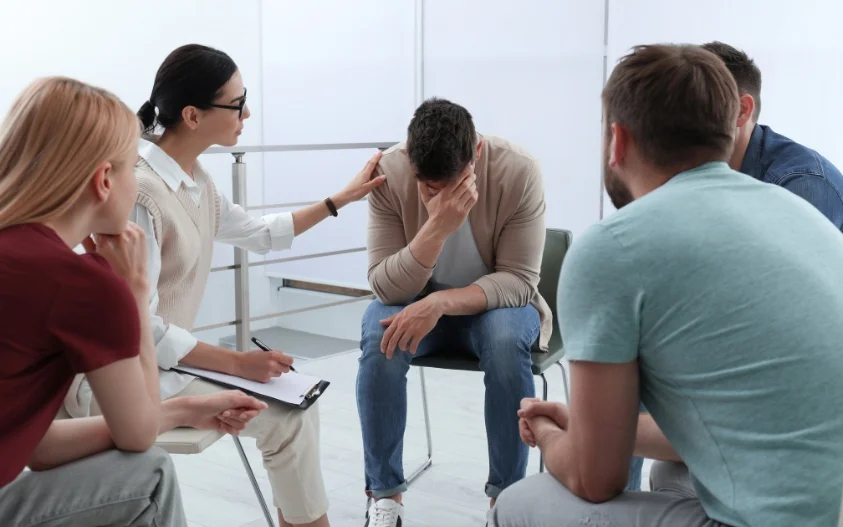24/7 Helpline:
(866) 899-221924/7 Helpline:
(866) 899-2219
Learn more about PTSD Treatment centers in Old Mission
PTSD Treatment in Other Cities

Other Insurance Options

Magellan Health

Optum

Premera

Molina Healthcare

Group Health Incorporated

Medical Mutual of Ohio

EmblemHealth

UMR

American Behavioral

Anthem

Multiplan

UnitedHealth Group

Lucent

Health Partners

BlueShield

WellPoint

Providence

Magellan

Health Choice

MVP Healthcare








Northern Lakes Community Mental Health
Northern Lakes Community Mental Health is a public rehab located in Traverse City, Michigan. Norther...

Pine Rest Christian Mental Health Services
Pine Rest Christian Mental Health Services - Silver Drive is located in Traverse City, Michigan. At ...

Addiction Treatment Services
Located in beautiful Traverse City, a resort community on the shores of northern Michigan's Grand Tr...

Hope Network Traverse City
Hope Network Traverse City offers comprehensive mental and behavioral health care for youth and adul...

Addiction Treatment Services – Phoenix Hall
Located in a beautiful downtown neighborhood within walking distance to Grand Traverse Bay, Addictio...





















































Addiction Treatment Services – Dakoske Hall
Addiction Treatment Services – Dakoske Hall is found in Traverse City, Michigan, and welcomes all, r...

Bay Area Counseling
Bay Area Counseling is a private rehab located in Traverse City, Michigan. Bay Area Counseling speci...

AA – Alcoholics Anonymous
AA – Alcoholics Anonymous is a non-profit rehab located in Traverse City, Michigan. AA – Alcoholics ...

Nexus Family Services
Nexus Family Services is a non-profit rehab located in Traverse City, Michigan. Nexus Family Service...

Alano Club
Alano Club is a non-profit rehab located in Traverse City, Michigan. Alano Club specializes in the t...

Child and Family Services – Traverse City
Child and Family Services – Traverse City is a private rehab located in Traverse City, Michigan. Chi...

Corvel Rehabilitation
Corvel Rehabilitation is a private rehab located in Traverse City, Michigan. Corvel Rehabilitation s...

Addiction Treatment Services – Outpatient
Located in beautiful Traverse City, a resort community on the shores of northern Michigan's Grand Tr...

Munson Medical Center – Behavioral Health
Munson Medical Center – Behavioral Health is a private rehab located in Traverse City, Michigan. Mun...

Addiction Treatment Services – PIER
Located in Traverse City, Michigan, Addiction Treatment Services – PIER is a drug and alcohol rehab ...

Excel Rehabilitation Services
Excel Rehabilitation Services is a private rehab located in Traverse City, Michigan. Excel Rehabilit...

Munson Medical Center – Outpatient
Munson Medical Center – Outpatient is a private rehab located in Traverse City, Michigan. Munson Med...


































